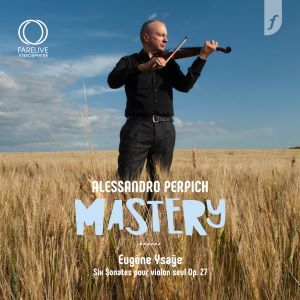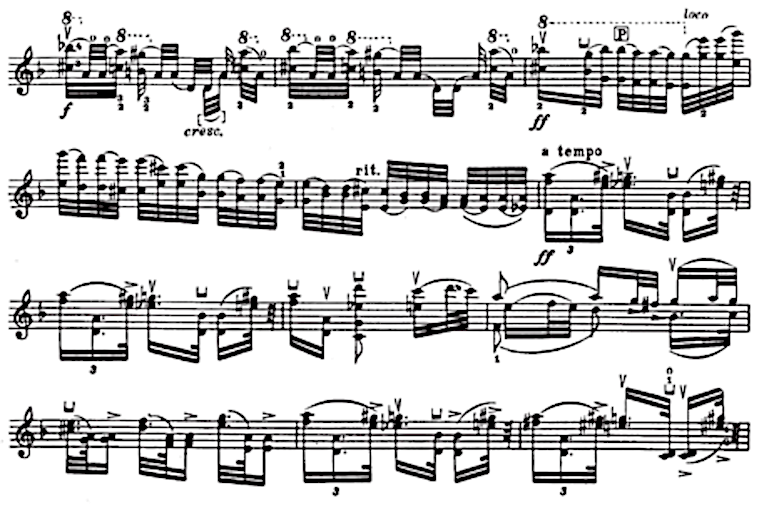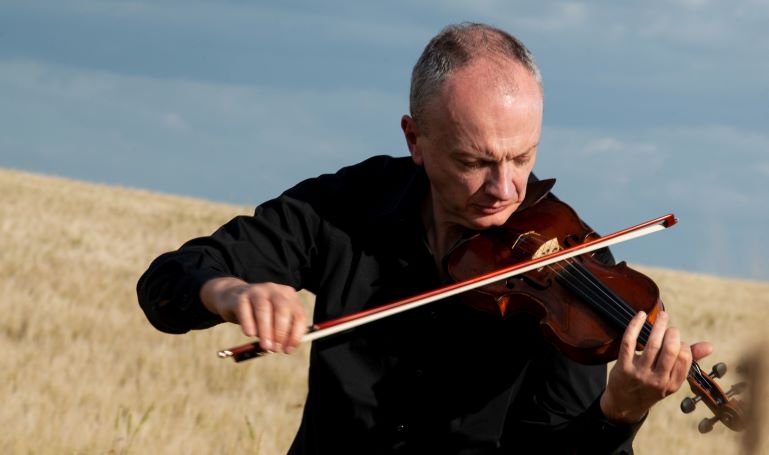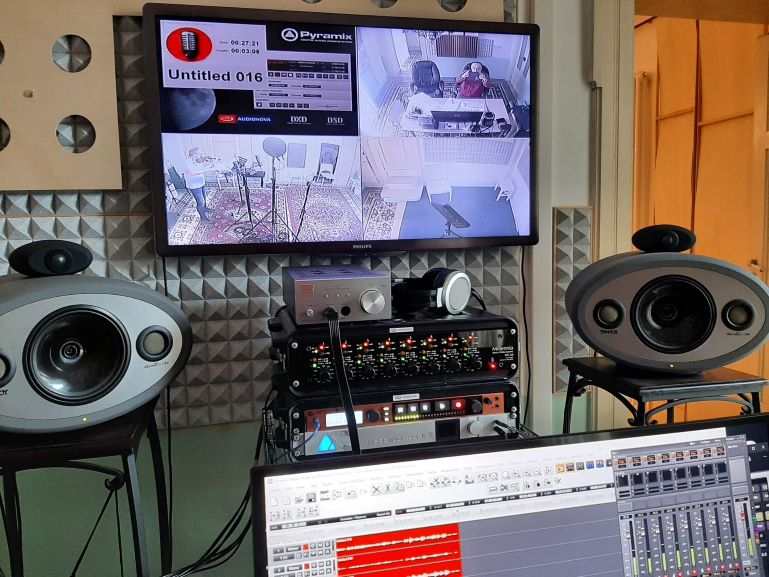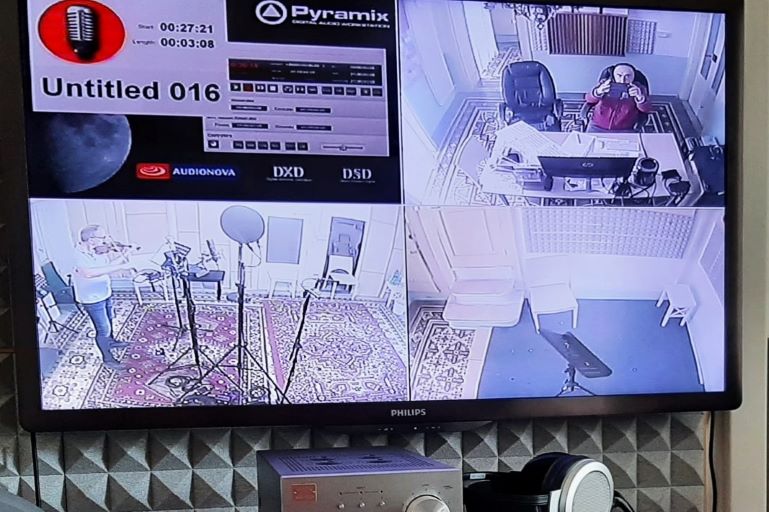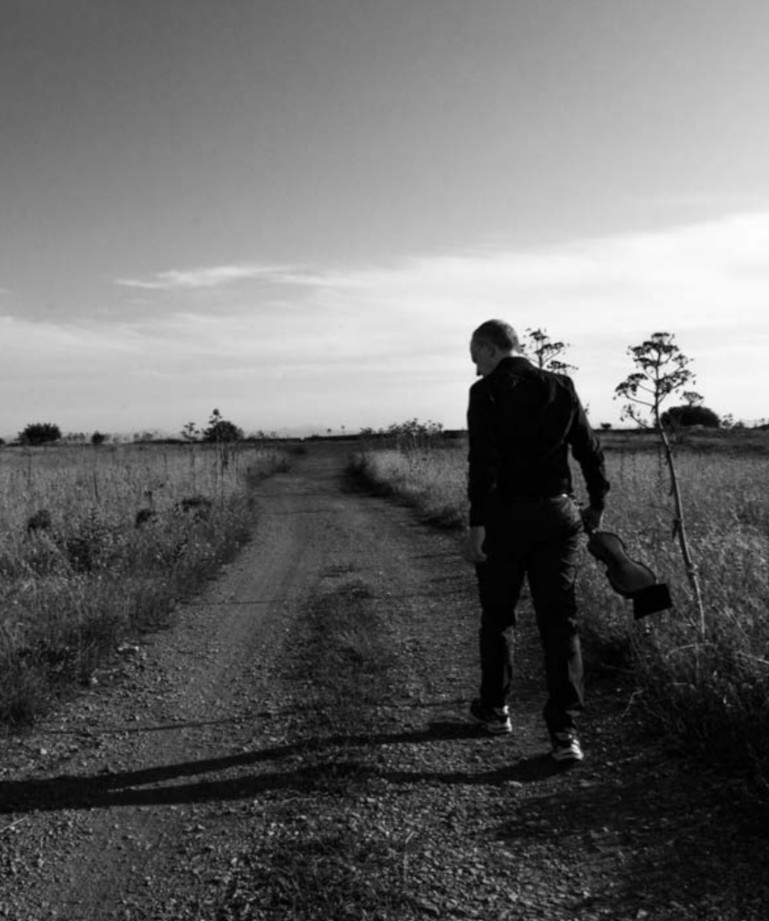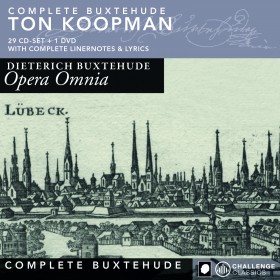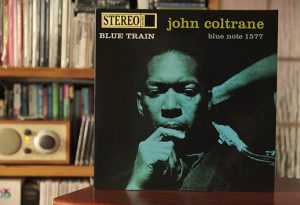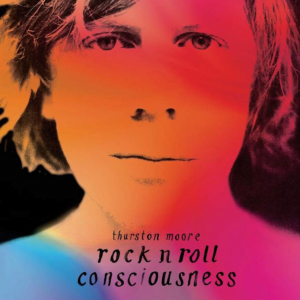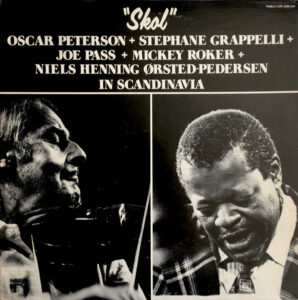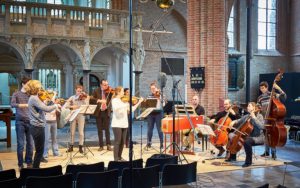Alessandro Perpich delivers an intensely felt, personal journey through the challenging Six Sonatas for Solo Violin by Eugène Ysaÿe. Perpich is an artist new to me, on a label new to me. I wanted to hear what he would have to say because every performance of worth is unique in the artist's relationship to Ysaye's music. I've not been disappointed.
Mastery, Six Sonatas for Solo Violin by Ysaÿe, Alessandro Perpich, violin. Farelive 2022 (DXD) HERE
Eugène-Auguste Ysaÿe (1858-1931) was a Belgian virtuoso violinist, composer, and conductor. He was hugely well-regarded by his contemporizes. As a performer, Ysaÿe was compelling and highly original. As a composer, his works were extraordinarily challenging.
As ClassicFM writes: "The third sonata of Eugène Ysaÿe's Six Sonatas for Solo Violin is completely dazzling, inspiring and horrifying - all at once.
"So, just how hard is it?
"Really, really hard. Just look at this random excerpt from the score and try to even vaguely understand it, let alone imagine how one might play it:
See ClassicFM article HERE.
The story of Ysaÿe writing these sonatas sounds so typical of great genius. Georg Predota writes in Interlude: "In 1923, Eugène Ysaÿe attended a performance by the great violinist Joseph Szigeti. The entire concert was dedicated to Ysaÿe's favorite composer, Johann Sebastian Bach. Deeply moved and inspired, Ysaÿe went to work and over the course of twenty-four hours sketched out these works. He was looking to compose a cycle of six sonatas for unaccompanied violin modeled after Bach. In addition, he tailored each sonata to a different contemporary virtuoso violinist of the day, “capturing something of each performer's style in the piece for whom it was written.” For a nice summary of each sonata and the virtuoso after whose style it was composed (Szigeti, Thibaud, Enesco, Kreisler, Crickboom, and Quiroga), I refer you to this Interlude article HERE.
Filled by a broad palette of colors and rewarding of infinite imagination, in these solo sonatas Ysaÿe challenges the violinist to transcend technical boundaries. There are artists whose performances sound technically perfect, their skills allowing for an articulation that sounds so incredibly precise, but some of those same performances fail to engage one's emotions—mine at least. They meet the technical challenges, but fail to transcend.
Not so Allesandro Perpich. His performances here are intense, passionate, fully emotionally engaged. While he may not achieve technical perfection here and there, he excels in making an emotional connection with the works and the listener. This, for me, is the more important measure of the value of these performances.
I find Perpich's album a most rewarding journey as he invites us along in this deeply personal exploration. In the accompanying booklet, he writes about the importance of loneliness as "a friend that forces us to look at ourselves, to look at ourselves and to turn within ourselves to look at the characters we have inside." Loneliness is not the enemy, he writes, because in solitude we begin an inner dialogue that creates balance among one's anxieties, desires, depressions. And through this dialogue with oneself, one frees the creativity that is inherent in every human being.
And the traversal of these various solo sonatas is, indeed, a journey full of discovery. I know of few more penetrating performances than these. I will continue taking this journey with him in future listening sessions to this album, beyond the five complete play throughs I've enjoyed so far.
A very fine, detailed, and closely rendered recorded sound complements these performances. Eustacchio Montemurro, chief engineer and founder of the Farelive record label, recorded the album at the Music Suite in Sammichele di Bari, Italy, using the excellent Merging Technologies Pyramix Editing Studio and Hapi converter, Millennia Media HV-3D 8-channel microphone preamp, and Neumann & Schoeps microphones. He creates 2-channel, 5.1 channel and binaural editions. The binaural edition is created in post-production and not using a separate Neumann head binaural microphone. I listened to the 2-channel DXD release.
As noted, this is a very fine studio recording, but it does come with the necessary limitations a modest sized recording studio. One may miss the more reverberant natural acoustic space heard in recordings made on-site in larger venues such as a church, performance hall, or even a large recording studio space like MCO studio, Hilversum. But don't neglect it for that reason. To some extent this more confined space adds to the sense of introspection and personal solitude to which our artist refers.
Overall, I find the recording very fine; it captures nicely the sound of Perpich's violin, a lovely sounding 1750 Carlo Landolfi, with excellent dynamics, resolution and truth to the timbre of the instrument.
I look forward to hearing more releases from the Farelive label. I also look forward to hearing more performances from Alessandro Perpich and will welcome them back to my listening room.
Photos courtesy of Sarah Vernice and Farelive.




